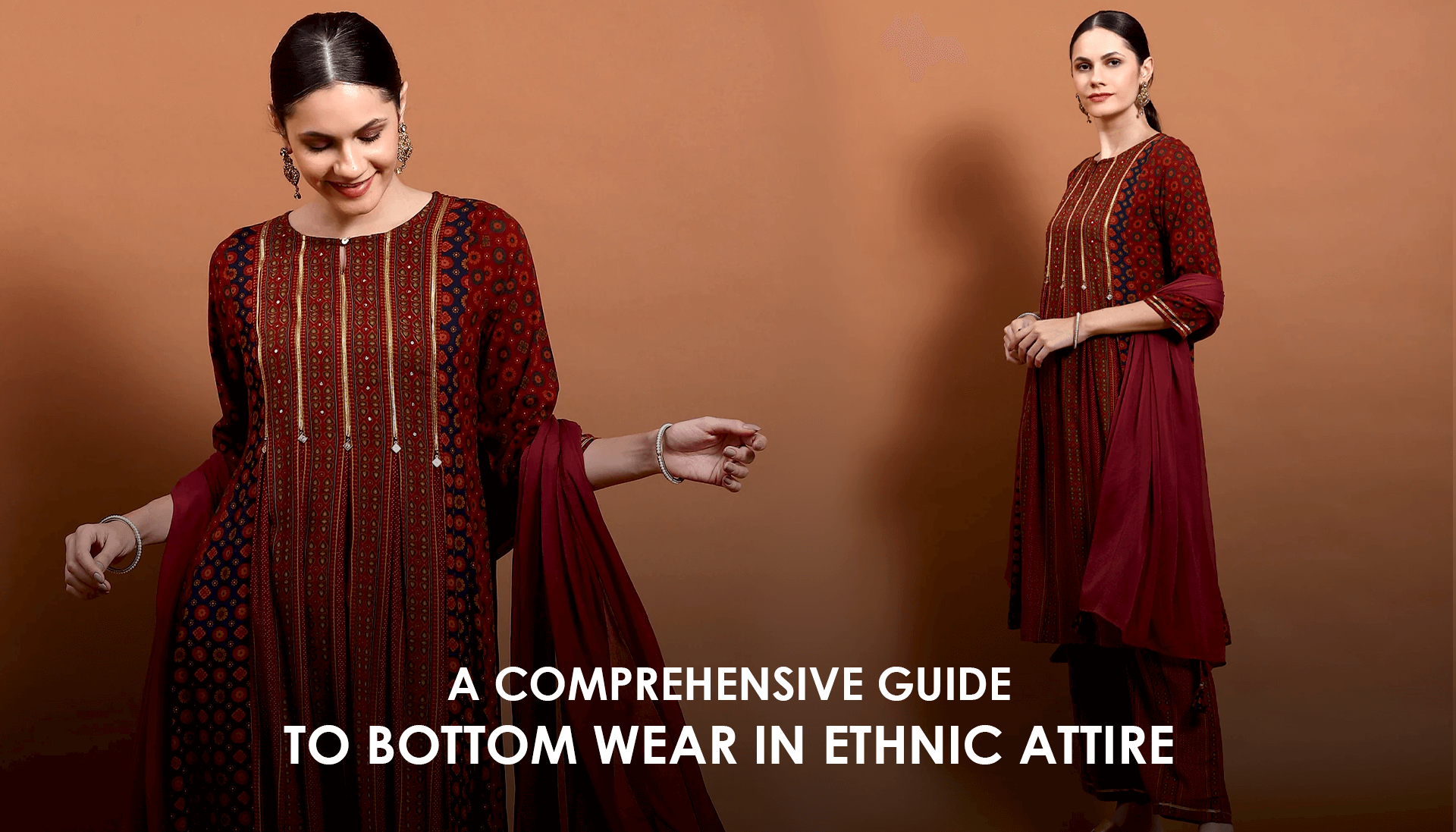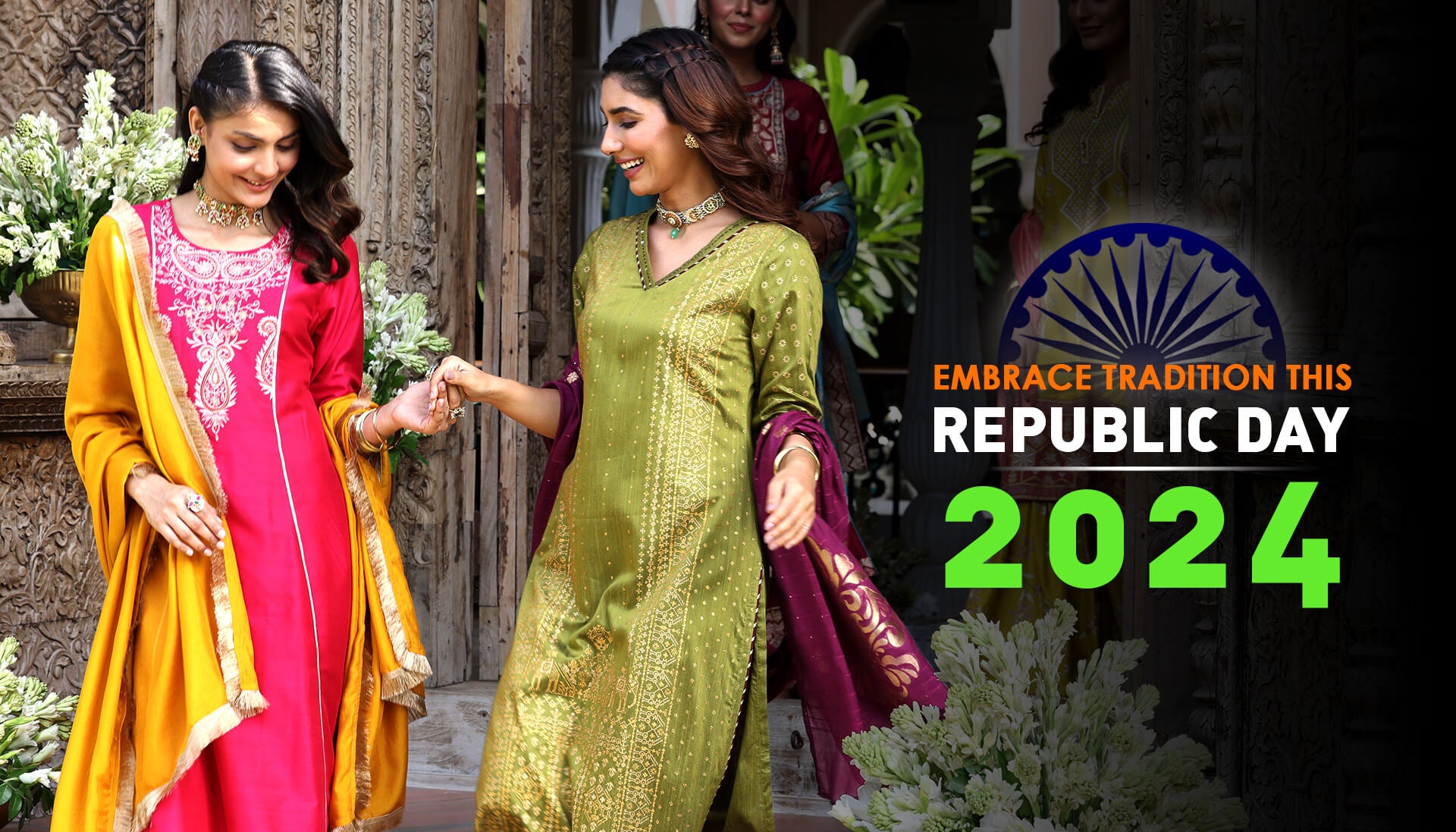The Craftsmanship Of Pashmina Kurta Sets
Nestled within the folds of time-honored tradition, Pashmina kurta sets stand as quintessential testaments to the seamless convergence of opulent comfort and timeless elegance. In this captivating journey through the craftsmanship underpinning these sartorial treasures, we unfurl the intricate processes that metamorphose Pashmina wool into wearable masterpieces. Within the warp and weft of these threads, we discover the dedication, heritage, and artistry that make each Pashmina kurta an embodiment of exquisite craftsmanship.
Understanding Pashmina
The term "Pashmina" traces its etymological roots to the Persian word "pashm," signifying wool. Sourced from the underbelly of the Capra hircus goat indigenous to the Himalayan region, Pashmina wool attains its unrivaled fineness through the arduous hand-combing process during the goats' molting season. This fine undercoat, often referred to as "soft gold," forms the basis of the luxurious fabric.
The Craftsmanship Begins: Spinning and Dyeing
At the genesis of crafting a Pashmina kurta set lies the delicate art of spinning. Adroit artisans employ traditional spinning wheels, deftly transforming the fine Pashmina fibers into a yarn that mimics the silk's luxurious touch. This initial stage lays the foundation for the velvety texture that defines Pashmina garments.
Following the meticulous spinning process, the yarn enters the realm of dyeing. Pashmina kurta sets boast a mesmerizing spectrum of colors, each thoughtfully chosen to harmonize with the fabric's innate sheen. Utilizing natural dyes sourced from plants, minerals, and insects, artisans pay homage to authenticity and eco-friendliness in every vibrant hue.
Hand Weaving: A Labor of Love
At the core of Pashmina craftsmanship is the intricate hand weaving process. Executed on handlooms by skilled artisans, this stage demands meticulous interlacing of each thread, resulting in the creation of distinctive patterns. Pashmina kurti design showcase an array of weaving techniques—twill, satin, and diamond weaves—each a testament to the artisan's consummate skill and unwavering attention to detail.
The Embroidery Touch
Many Pashmina kurta sets bear the mark of delicate embroidery, elevating their aesthetic allure. Skilled craftsmen employ techniques like Aari, Sozni, and Tilla to weave intricate patterns onto the fabric. Aari embroidery, characterized by fine chain-like stitches, intertwines with Sozni's detailed needlework. Tilla embroidery introduces metallic threads, infusing regal opulence into the garment.
Block Printing: A Heritage Technique
Certain Pashmina kurta sets proudly display the age-old art of block printing. Wooden blocks are painstakingly carved with elaborate patterns by artisans, which are subsequently dipped in natural dyes and pressed onto cloth. This labor-intensive technique imparts a unique, handcrafted charm to each piece, making every Pashmina kurta set a wearable work of art.
The Finishing Touch: Blocking and Pressing
Post-weaving, dyeing, and embellishing, Pashmina kurta sets undergo a final stage of blocking and pressing. This crucial step ensures that the garment maintains its shape and finish. Skilled craftsmen utilize heated irons and steam to perfect the appearance, resulting in a Pashmina kurta set that not only feels luxurious but also exudes impeccable tailoring.
Caring for Pashmina Kurtas
The exquisite craftsmanship of Pashmina kurta sets demands special care. Gentle hand washing in cold water with a mild detergent is recommended, and the garment should be laid flat to dry to preserve its shape. Shielding it from direct sunlight and storing it in a breathable bag will further safeguard the fabric's integrity.
The Global Impact of Pashmina Craftsmanship
Beyond its luxurious appeal, Pashmina craftsmanship holds cultural and economic significance. The demand for Pashmina products has supported communities in the Himalayan region, providing livelihoods to skilled artisans and preserving a cultural heritage passed down through generations. The intricate process involved in crafting Pashmina kurta sets also contributes to sustainable practices, with many artisans embracing eco-friendly dyeing methods and traditional techniques.
A Heritage Woven in Threads
In conclusion, the craftsmanship of Pashmina kurta sets stands as a testament to a rich cultural heritage and the artisanal skills passed down through generations. From the lofty Himalayan peaks to the adept hands of craftsmen, each stage in creating a Pashmina kurta set reflects an unwavering commitment to preserving tradition and crafting wearable art. As you envelop yourself in the luxurious softness of Pashmina, remember that you're not just donning a garment; you're adorning yourself in a legacy of craftsmanship that transcends time.
FAQs
- What makes Pashmina wool unique?
Pashmina wool is sourced from the underbelly of the Capra hircus goat, native to the Himalayan region. The extreme weather conditions in these high-altitude areas contribute to the development of a fine, insulating undercoat, resulting in a wool known for its unrivaled softness.
- How is Pashmina wool obtained from goats?
Pashmina wool is obtained through a meticulous hand-combing process during the goats' molting season. Skilled herders carefully comb the undercoat, separating the fine fibers from the coarser outer hair.
- What is the significance of natural dyes in Pashmina crafting?
Natural dyes, derived from plants, minerals, and insects, are crucial to maintaining the authenticity and eco-friendliness of Pashmina crafting. They enhance the fabric's vibrant hues while minimizing environmental impact.
- Can you explain the various weaving techniques used in Pashmina kurta sets?
Pashmina kurta sets showcase weaving techniques such as twill, satin, and diamond weaves. Each technique requires skill and attention to detail, contributing to the fabric's distinctive patterns.
- What are the different embroidery techniques employed in Pashmina kurta sets?
Aari, Sozni, and Tilla are commonly used embroidery techniques. Aari involves fine chain-like stitches, Sozni is known for detailed needlework, and Tilla incorporates metallic threads for added opulence.
- How does block printing contribute to the charm of Pashmina kurta sets?
Block printing involves carving intricate designs onto wooden blocks, which are then stamped onto the fabric using natural dyes. This labor-intensive technique imparts a unique, handcrafted charm to each Pashmina kurta set.
- Why is blocking and pressing crucial in the final stages of crafting Pashmina kurta sets?
Blocking and pressing ensure that the Pashmina kurta sets maintain their shape and finish. Skilled craftsmen use heated irons and steam to perfect the appearance, resulting in a garment that feels luxurious and looks impeccably tailored.
- How can I care for my Pashmina kurta set to ensure its longevity?
To care for your Pashmina kurta set, it is recommended to gently handwash it in cold water with a mild detergent, lay it flat to dry to preserve its shape, and avoid direct sunlight exposure. Storing it in a breathable bag further safeguards the fabric's integrity.
- What is the cultural and economic impact of Pashmina craftsmanship?
Pashmina craftsmanship holds cultural significance by preserving traditional practices and providing economic support to communities in the Himalayan region. The demand for Pashmina products sustains livelihoods for skilled artisans.
- How does Pashmina contribute to sustainable practices?
Many artisans embrace eco-friendly dyeing methods and traditional techniques, contributing to sustainable practices in the crafting of Pashmina products.
- Can I wear Pashmina kurta sets year-round?
Yes, Pashmina kurta sets are versatile and can be worn year-round. The fine wool provides warmth in colder seasons while remaining breathable for comfort in warmer weather.
- Are there variations in Pashmina kurta sets based on regional influences?






